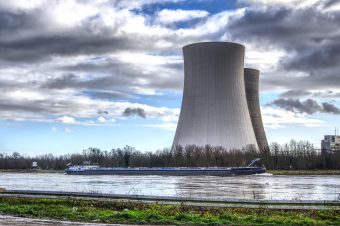India has set ambitious goals for energy transition and strengthening energy security. According to data from the organization EMBER, the Union Budget 2025 marks the third budget within a 25-year strategy leading up to the 100th anniversary of India’s independence.
India gained independence in 1947, and in 2022, it began a long-term development period extending to 2047, aiming to become an economically strong, energy-independent, and environmentally sustainable country.
As part of these efforts, India aims to achieve net-zero emissions by 2070. This goal involves the simultaneous development of the economy and the implementation of measures for a clean and sustainable future.
The country is focusing on diversifying its energy mix by expanding solar and wind energy capacities, building energy storage infrastructure, and increasing the use of electric vehicles. Additionally, decarbonizing heavy industry and developing India’s carbon market have gained increasing importance in recent years.
One of the key targets is reaching 500 GW of non-fossil energy capacity by 2030. As of December 2024, the total installed capacity from non-fossil sources was 225.8 GW. The largest share of this capacity comes from solar energy, with 97.9 GW, followed by wind energy with 48.2 GW, hydro energy with 46.9 GW, and nuclear energy with 8.2 GW.
More:
- European People’s Party: Climate Goals Must Align with EU Industry Preservation
- Germany Sets New Record – 62.7 percent of Electricity from Renewables in 2024
- European Commission Invests 2.4 Billion Euros in Green Technologies
Union Budget 2025
The Union Budget 2025 will focus on long-term energy security, plans to expand nuclear capacity to 100 GW by 2047, and, as reported by EMBER, will emphasize domestic production of key components such as solar cells, batteries, and wind turbines. Micro, small, and medium enterprises have been recognized as the main drivers of the country’s development path.
Another significant decision is the removal of import duties on cobalt powder, waste lithium-ion batteries, and other critical minerals to support India’s recycling industry. By eliminating costs on key raw materials from waste, the budget aims to reduce costs for secondary raw material producers and encourage investment in the recycling of critical minerals.

Additionally, in January 2025, the National Mission for Critical Minerals was launched with a budget of INR 34,300 million (approximately 380 million euros) over seven years to build a resilient value chain for resources essential to green technologies.
Regarding nuclear energy, Budget 2025 sets a target of adding 100 GW of nuclear capacity by 2047. Achieving this goal will require legislative reforms, particularly regarding the inclusion of the private sector.
Currently, India has 8.2 GW of nuclear capacity, accounting for 2.6 percent of total electricity production. The country plans to introduce five small modular reactors (SMRs) by 2033 and an additional 7 GW of capacity by 2031.
Previous Union Budgets have focused on different segments of this transition. The 2022 Budget was dedicated to domestic solar equipment production, while the 2023 Budget introduced incentives for energy storage and the development of the green hydrogen industry. Finally, the 2024 Budget primarily addressed offshore wind farms, subsidies for rooftop solar panels, and support for critical minerals.



